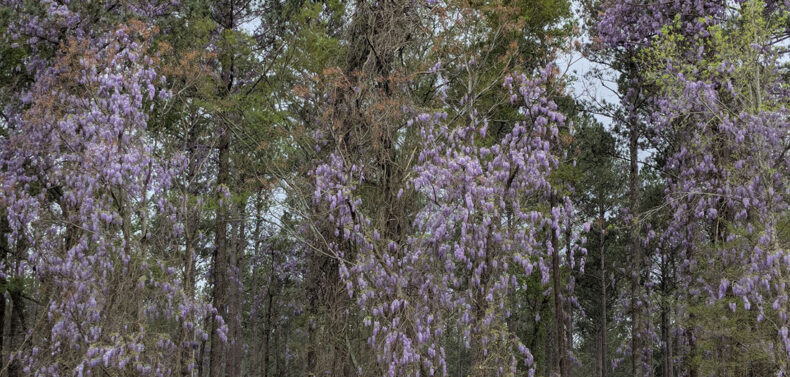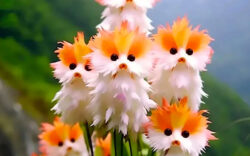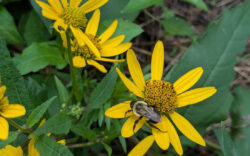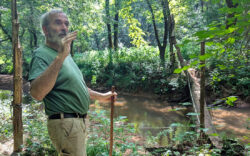While perusing spring plant sales, it can be hard to pause and do a quick internet check on whether a new favorite is invasive or not. And, if you do, the sources you check could be confusing. Not all plants categorized as invasives act invasive everywhere.
Good news: Most of the varieties sold these days are monitored for invasiveness. Growers and garden centers don’t want you to hate their plants. That said, there’s still some baddies you can easily avoid.
Privet is nearly indestructible and comes in a wide array of varieties. Because it keeps its leaves during the winter, it can be used as a privacy screen. That said, it is a pest of a plant and wildly invasive. The Georgia Invasive Species Council ranks Chinese privet, Japanese privet and glossy privet all as major concerns. There are many different varieties, and while some are sold with the name of “privet” prominent on the label, I’ve also seen different varieties sold under the latin genus name of “ligustrum.” Don’t be fooled—it’s still privet. You can find sterile privets, if you’re really hooked, but there are many more interesting choices.
If you’re looking for year-round leaves and something more acceptable to your HOA neighbors, I’d suggest planting camellias. Though not native, camellias are a well-established and much cherished member of the Old Southern Yard. They can be used to create some privacy and can take quite a beating. That said, they won’t invade the rest of your garden bed and, if necessary, you can kill them by cutting them all the way back to the roots without employing harsh chemicals. Native American hollies could also fit the bill.
Don’t reach for invasive wisteria! There are American varieties available, even at the big box stores. You’ll want to be careful and check the Latin on the name tags. Wisteria frutescens is what you want. Avoid Wisteria sinensis or Wisteria floribunda. While any wisteria left unchecked could take over a garden, the native version isn’t as all-consuming. All those lovely purple blooms covering the loblolly pines and competing with kudzu for domination of the wilder parts of the highway at the beginning of spring? That’s invasive wisteria. The invasive stuff blooms before it puts out leaves, while the American version blooms after it puts out leaves. American wisteria can also bloom twice in a year if weather and soil conditions allow—just another reason to plant the native over the imported version.
Mahonias generally grow as medium to large bushes. They have holly-like leaves that remain green yearlong and are popular in shade gardens. Various garden experts say the newer varieties of mahonia aren’t invasive like the leatherleaf mahonia (Mahonia Bealei). The leatherleaf is considered invasive by several invasive plant councils from Maryland to Alabama. Both a vigorous growing habit and bird distribution has helped the leatherleaf spread. While the options I see on sale are touted as well behaved, they still produce berries. If you’re looking for shade-loving bushes, I love my native Hearts-A-Bursting bush (or Strawberry Bush) and the Beautyberry.
Nandina or Heavenly bamboo keep their leaves year-round, come in a variety of attractive colors, and pollinators love the flowers. I have a bush on the side of my house that’s endured dump trucks hitting it, Georgia Power trucks rolling over it and me cutting it back once a year. The thing just keeps right on growing into the gravel driveway. This is part of what makes it so invasive; it’s nearly impossible to kill. The bush also produces berries that contain cyanide capable of killing birds or pets, if enough are eaten at once. Sterile nandina varieties are available, but it’s boring—nearly every parking lot in America has a tuft of nandina planted in its landscape islands.
I’m going out on a limb and predict that African iris will be an invasive species in Georgia in the future. It’s beautiful, so gardeners will buy it. It tolerates a wide variety of soils and light conditions. It likes the heat and is used in mass border plantings. African iris can reproduce through seeds and underground rhizomes (as can every other plant on this list). It’s already being tagged as invasive for Southern California, though that doesn’t seem to be raising red warning flags elsewhere. I could be missing out, but I’ll stick to the non-native, mannerly bearded irises.
Like what you just read? Support Flagpole by making a donation today. Every dollar you give helps fund our ongoing mission to provide Athens with quality, independent journalism.










